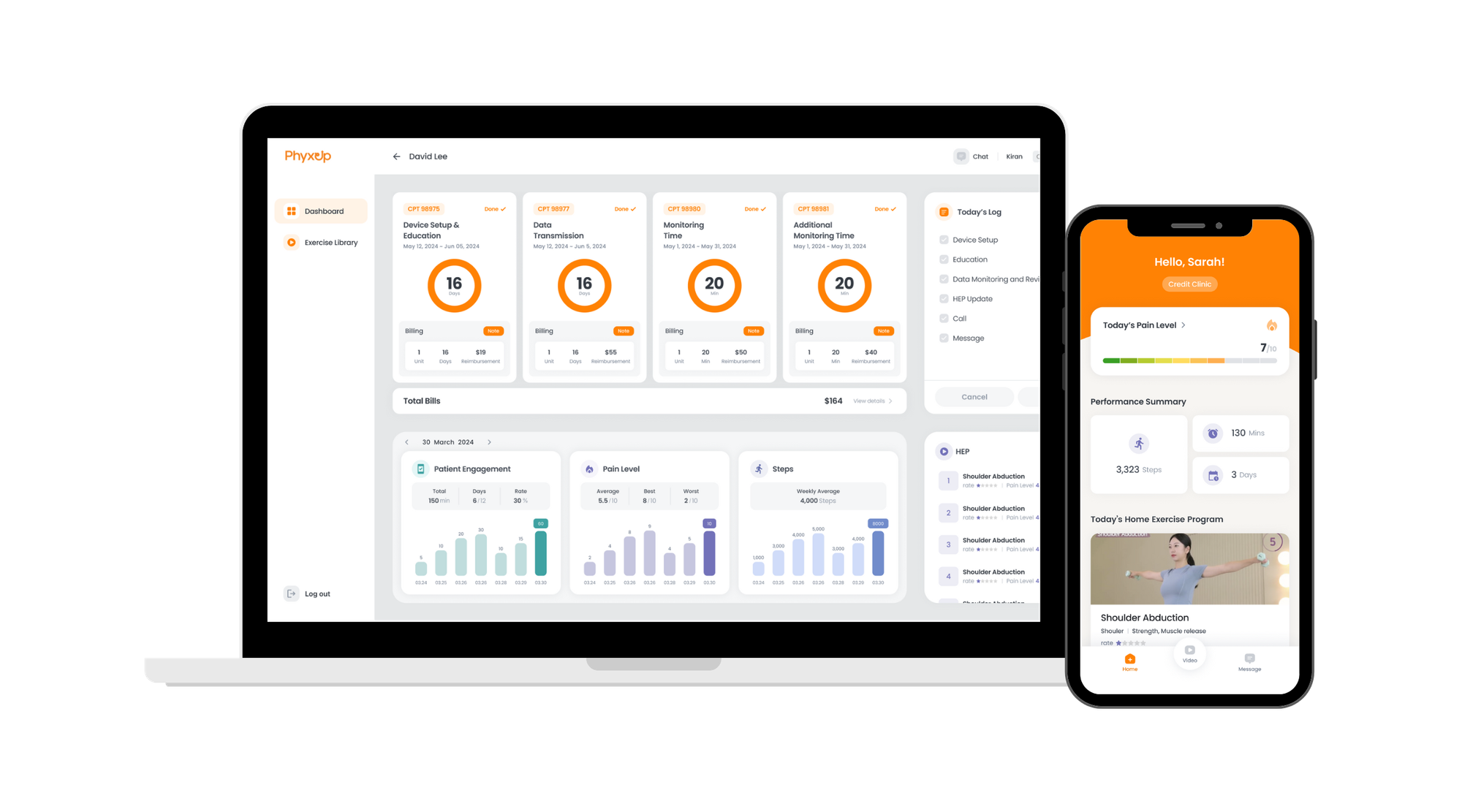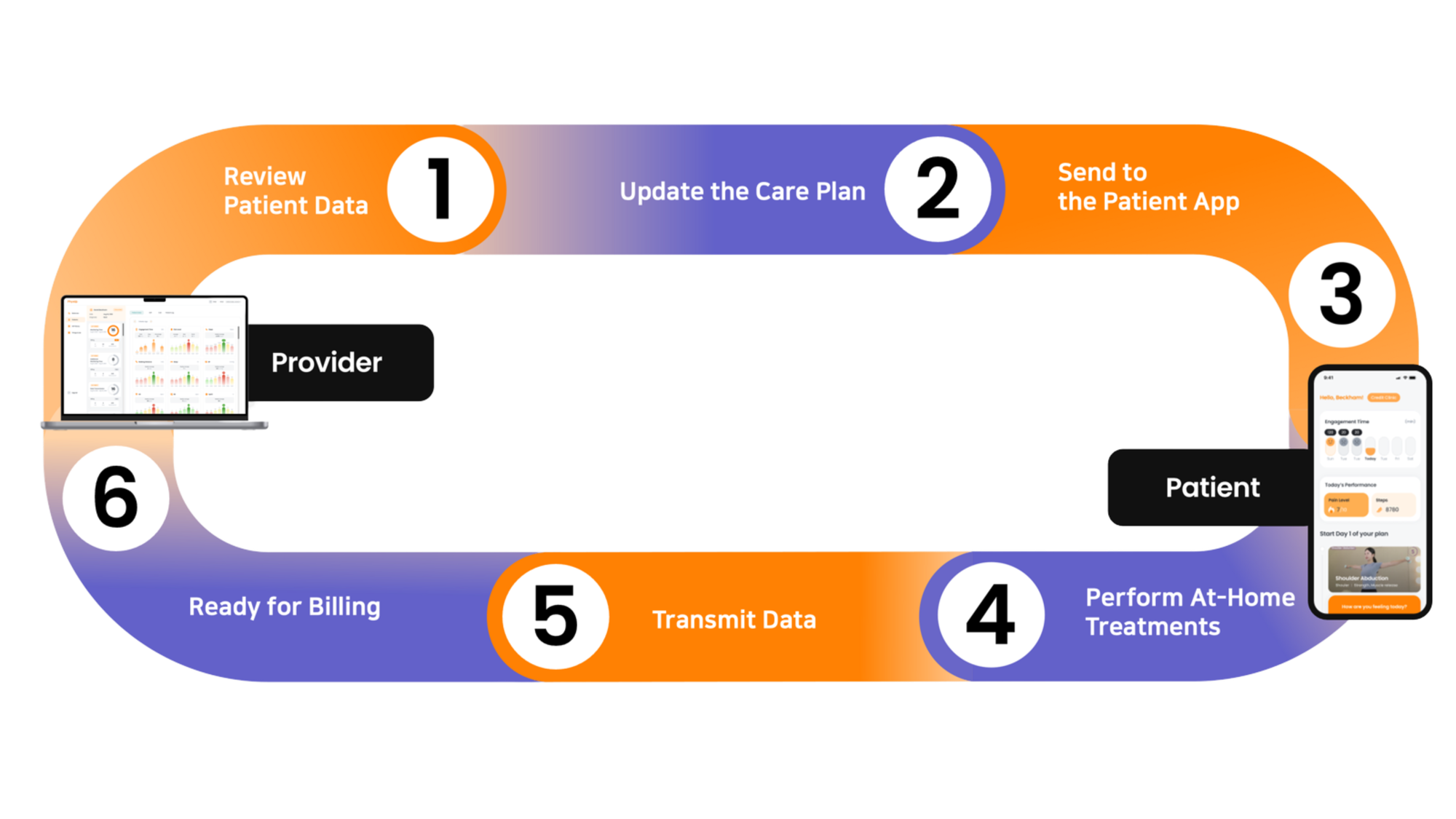Why Physical Therapy Practices Should Adopt RTM Early to Stay Competitive

The healthcare industry is rapidly evolving with the integration of technology and data-driven solutions. Remote Therapeutic Monitoring (RTM) is one such innovation that physical therapy practices should adopt to meet patient needs, optimize operations, and stay competitive. RTM is not just a luxury for forward-thinking clinics but a necessity in modern healthcare.
This article explores why RTM is vital, how it works, and the key benefits and strategies for implementing it early.
What is Remote Therapeutic Monitoring?
Remote Therapeutic Monitoring (RTM) uses digital platforms like apps or software to track a patient’s rehabilitation progress between visits. It provides actionable data that therapists can use to optimize care in real-time. Key areas RTM monitors include:
- Adherence to Home Exercise Programs (HEPs): Tracks whether patients are compliant with their prescribed exercises at home.
- Physical Activity Levels: Measures steps, mobility patterns, and other movement-related metrics.
- Symptom Tracking: Monitors pain levels, discomfort, or other indicators of recovery progress.

The Growing Need for RTM in Physical Therapy
- Bridging the Adherence Gap: Many physical therapy patients struggle to follow their prescribed exercise programs due to challenges like forgetfulness, lack of motivation, or confusion about the instructions. RTM provides practical solutions to these issues by offering:
- Automatic Exercise Reminders: Patients receive timely notifications to complete their exercises, keeping them accountable and on schedule.
- Step-by-Step Visual Guidance: Clear videos and visuals help ensure patients perform their exercises correctly, reducing the risk of improper technique or injury.
- Ongoing Feedback and Motivation: RTM platforms allow therapists to monitor patient progress in real-time, offering personalized encouragement and celebrating milestones, which helps patients stay engaged and motivated throughout their recovery.
- Maximizing Productivity During Downtime: Cancellations and no-shows often lead to wasted downtime for therapists. RTM helps turn these gaps into opportunities by allowing therapists to monitor patient progress remotely, provide real-time feedback, and adjust treatment plans as needed. This ensures continuity of care and maximizes productivity, even when patients miss in-person sessions.
- Leveraging New Reimbursement Opportunities: With the introduction of new reimbursement codes (98975, 98977, 98980, 98981) for RTM, physical therapy practices can now bill for these services. Early adoption of RTM provides a financial advantage by generating extra revenue through these codes. Additionally, it improves the patient experience, further strengthening the value of implementing RTM in practice.
CPT Codes for Remote Therapeutic Monitoring (RTM)
In 2022, the Centers for Medicare & Medicaid Services (CMS) introduced new CPT codes to reimburse for Remote Therapeutic Monitoring (RTM) services. These codes allow physical therapy practices to bill for the use of digital health tools that remotely monitor and manage a patient’s rehabilitation. The key RTM CPT codes are:
- CPT Code 98975: This code is used for the initial set-up and patient education related to RTM services. It covers the time spent explaining the RTM program, setting up apps, and ensuring that the patient understands how to use the app.
- CPT Code 98977: This code covers the transmission of patient data, including home exercise program adherence and symptom tracking. It applies when at least 16 days of data have been collected and transmitted within 30 days for RTM services.
- CPT Code 98980: This code applies when a physical therapist spends 20 minutes remotely monitoring and analyzing a patient's progress. It includes reviewing data and making adjustments to the treatment plan as necessary.
- CPT Code 98981: This code is used for additional RTM monitoring time, reflecting over 20 minutes of monitoring in a calendar month. It covers situations where ongoing, more detailed monitoring and treatment modifications are needed.
The introduction of these new CPT codes in 2022 has made RTM services eligible for reimbursement, providing physical therapy practices with a financial incentive to adopt and integrate these technologies into their patient care workflows.
Key Benefits of Early RTM Adoption
- Improved Patient Outcomes: RTM enables therapists to proactively address issues like improper exercise techniques or unreported pain. For example, if a patient’s activity level drops, the therapist can intervene before setbacks occur. This leads to faster recovery and fewer complications.
- Enhanced Patient Engagement: Patients are more likely to stay motivated when they know their progress is being monitored. Features like progress tracking, badges, and rewards gamify the recovery process, making it more engaging.
- Streamlined Communication: RTM platforms often include secure messaging, video consultations, and data-sharing features. These tools improve communication between therapists and patients, fostering trust and collaboration.
- Competitive Differentiation: Adopting RTM signals to patients that your clinic is innovative and committed to delivering cutting-edge care. This can attract new patients and strengthen loyalty among existing ones.
- Increased Revenue Streams: By utilizing RTM billing codes, clinics can generate additional income without adding a significant workload. For example, clinics can bill for monitoring a patient’s progress or providing virtual consultations.
RTM as a Game Changer in Physical Therapy
- Data-Driven Decisions: The RTM model provides therapists with detailed data on patient progress. By analyzing trends, therapists can adjust treatment plans to achieve the best results. This data also helps with insurance documentation, making it easier to justify the need for treatment.
- Proactive Patient Management: RTM allows therapists to take action earlier, without waiting for in-person appointments. Notifications about things like reduced activity or worsening symptoms help therapists make necessary adjustments sooner.
- Improved Access for Patients in Remote Areas: RTM makes physical therapy more accessible to patients in rural or underserved areas. With fewer barriers to care, more people can receive quality therapy, even if they have limited mobility.

How RTM Improves the Therapist-Patient Relationship
RTM helps build trust and cooperation between therapists and patients. Real-time monitoring shows patients that their therapist is dedicated to their progress. This boosts patient morale, leading to higher satisfaction and better results.
RTM also gives patients more control by allowing them to track their improvements. When they see things like better mobility or less pain, they’re more motivated to stick with their therapy program.
Best Practices for Implementing RTM in Physical Therapy
- Choose the Right Technology: Select an RTM solution that aligns with the needs of your practice, such as PhyxUp Health, which offers a seamless, user-friendly platform for physical therapists. Important features to consider include:
- Integration with your existing systems and workflows.
- Easy-to-use interfaces for both therapists and patients.
- Safe data storage that meets HIPAA standards.
- Educate Your Team: Training your staff on how to use RTM tools effectively is essential. Regular workshops and practice sessions can improve confidence and efficiency with the technology.
- Pilot the Program: Start by implementing the RTM system with a small group of patients to test its effectiveness. Gather feedback, make any necessary adjustments, and gradually expand the program based on the results.
- Highlight the Value to Patients: When introducing RTM to patients, explain how it can make their recovery process easier and more focused on their needs. Help them understand the benefits and how it will improve their care.
Conclusion
Remote Therapeutic Monitoring represents the future of physical therapy. By adopting RTM early, clinics can improve patient outcomes, streamline operations, and unlock new revenue opportunities. With new reimbursement opportunities available through CMS's introduction of RTM-specific CPT codes in 2022, early adoption of RTM isn’t just an advantage—it’s essential for long-term success.
